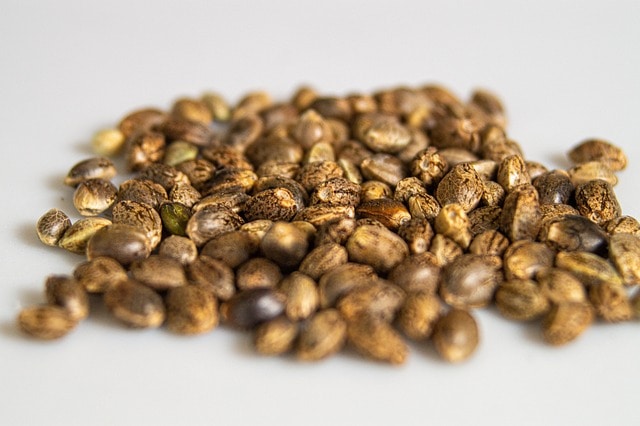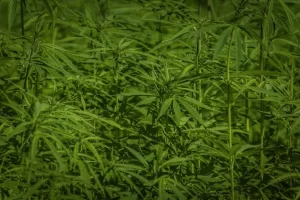Cultivating cannabis is an art in itself, and understanding the distinctions between sativa and indica strains is crucial for any grower looking to achieve optimal results. Whether you’re a seasoned grower or just starting, navigating the unique characteristics of these two primary types of cannabis plants is essential. From growth patterns to effects, each strain offers a distinct experience. Join us as we delve into the world of sativa vs. indica and uncover the key variations that will help you elevate your grow operation.
Exploring Sativa and Indica: An Overview
When it comes to cultivating cannabis, distinguishing between sativa and indica is fundamental. Sativa strains are known for their energizing and invigorating effects, making them ideal for daytime use. On the other hand, indica strains are prized for their relaxing and calming properties, often preferred for evening consumption. Understanding these fundamental characteristics sets the groundwork for a successful grow operation that caters to the unique needs of each plant.
Beyond their effects, sativa and indica plants exhibit physical variations as well. Sativa plants typically grow tall and slender with narrower leaves, requiring more vertical space during cultivation. Conversely, indica plants are shorter and bushier with broader leaves, making them suitable for indoor growing setups with limited height. By recognizing these growth distinctions, growers can optimize their space efficiently.
In addition to their physical variances, sativa and indica strains also differ in their flowering times. Sativa plants generally have longer flowering periods, often requiring more patience from cultivators. In contrast, indica plants tend to flower more quickly, offering a faster turnaround time for harvest. This critical disparity influences the cultivation timeline and the overall efficiency of the grow operation.
Furthermore, understanding the terpene profiles of sativa and indica strains can significantly impact the final product’s aroma and flavor. Sativa strains tend to boast fruity, citrusy, and uplifting scents, enhancing the sensory experience for consumers. In contrast, indica varieties often exhibit earthy, skunky, and sedating aromas, contributing to their relaxing effects. By harnessing the unique terpene profiles of each strain, growers can craft a diverse range of cannabis products.
In essence, exploring the nuanced characteristics of sativa and indica strains provides growers with valuable insights to tailor their cultivation practices effectively. By leveraging the distinctive traits of each type, growers can create a dynamic and thriving grow operation that yields high-quality cannabis while meeting the diverse preferences of consumers.
The Growth Characteristics of Sativa Plants
Sativa plants are renowned for their towering heights and long internodal spacing, resulting in tall, elegant colas that reach for the sky. These plants thrive in outdoor settings with ample sunlight, allowing them to stretch and develop fully. However, indoor cultivators must accommodate their vertical growth by implementing techniques such as topping or low-stress training to manage height.
Due to their elongated flowering periods, sativa plants require patience and careful monitoring throughout the growth cycle. Ensuring consistent light exposure and nutrient delivery is crucial to supporting the plant’s extended maturation process. By maintaining a conducive environment with proper humidity levels and ventilation, growers can foster healthy sativa plants that produce abundant yields.
In terms of feeding requirements, sativa plants generally benefit from nutrient-rich soil amended with organic matter to support their vigorous growth. Providing balanced fertilization throughout each growth stage helps sustain the plant’s nutritional needs and promote robust development. Additionally, monitoring pH levels in the root zone is essential to prevent nutrient deficiencies and optimize nutrient uptake.
When it comes to harvest, sativa plants often exhibit clear and energizing effects that are favored by consumers seeking a stimulating experience. Their uplifting properties make them popular choices for creative endeavors, social gatherings, or daytime activities. By mastering the cultivation techniques specific to sativa plants, growers can cultivate potent and flavorsome cannabis buds that appeal to a wide audience.
Comparing Indica’s Yield with Sativa’s Effects
Unlike sativa’s tall stature, indica plants tend to be compact and bushy, making them well-suited for indoor cultivation with limited space. Their manageable size and dense foliage allow for efficient use of grow room real estate, maximizing yields in constrained environments.
Indica strains are celebrated for their rapid flowering times and higher resin production, resulting in potent and sedating effects that appeal to those seeking relaxation and stress relief. The dense buds of indica plants often carry an earthy aroma and deliver a calming experience that soothes both the body and mind.
In terms of yield, indica plants can offer substantial harvests due to their dense bud structure and resinous trichomes. Growers cultivating indica strains can expect generous returns within a relatively short flowering period, making them an attractive option for commercial operations seeking efficiency and productivity.
The therapeutic benefits of indica strains, including their ability to promote sleep and alleviate pain, have contributed to their popularity among medical cannabis users. By harnessing the relaxing and analgesic properties of indica plants, patients can find relief from various ailments and improve their quality of life through targeted cannabis therapies.
Optimizing Your Grow Setup for Sativa Success
Creating an optimal environment for sativa plants involves balancing light exposure, airflow, and humidity levels to mimic their natural habitat. Supplemental lighting sources such as LEDs or HPS lamps can help compensate for insufficient sunlight and promote vigorous growth during all growth stages.
Maintaining proper ventilation is crucial for preventing mold and mildew issues, especially in humid climates where sativa plants may be more susceptible to moisture-related problems. Implementing fans, air filters, and adequate air circulation systems can safeguard plants against environmental stressors and ensure robust growth.
When it comes to nutrient uptake, sativa plants require balanced feeding schedules that cater to their extensive root systems and rapid growth rates. Incorporating organic fertilizers and micronutrient supplements can enhance the plant’s resilience to nutrient imbalances and support optimal nutrient absorption.
Pruning and training techniques such as topping, LST, and defoliation can help manage sativa plants’ vertical growth patterns and improve light penetration throughout the canopy. By shaping the plant’s structure and directing energy towards bud development, growers can increase yields and produce high-quality colas with consistent potency.
Cultivating Success with Sativa and Indica
‘As you strive to create the perfect environment for your cannabis plants, remember that each strain, whether sativa or indica, brings its own set of qualities to the table. By understanding these variations, you can tailor your grow operation to meet the specific needs of your plants, ultimately leading to a successful harvest. Never underestimate the power of knowledge and observation in fine-tuning your growing techniques to nurture thriving cannabis plants.’














